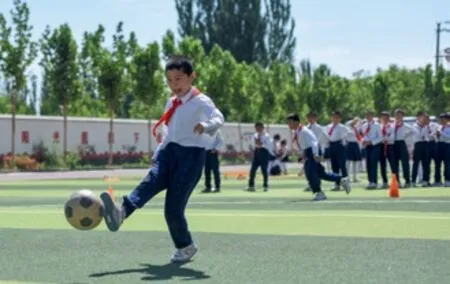The Xinjiang Narrative:A Presumption of Guilt?
2022-09-16ByLiangXiao
By Liang Xiao
The presumption of innocence is a common legal principle in the West,stating the prosecution must prove guilt and the accused party is considered innocent until proven otherwise.
Yet when it comes to the human rights situation in China’s Xinjiang Uygur Autonomous Region, many Western governments, led by the U.S., seemingly have turned this longstanding belief into the“presumption of guilt.” Based on their own historical experiences involving colonial expansion, religious suppression and authoritarian threats, their narrative infers the Communist Party of China (CPC) has engaged in “genocide,” “forced labor” and“religious persecution” targeting the region’s Uygur residents. This type of Xinjiang narrative must be confusing to the vast majority of ordinary Western people who don’t know all that much about China in general, let alone about any of its many specific regions.
During China’s Han Dynasty (202 B.C.-A.D. 220), the Xinjiang region, then known as the Western Regions, had been formally incorporated into China’s territory and long served as an important trade hub along the ancient Silk Road. But during the late Tang Dynasty (618-907), when the central power waned due to various insurgences and diminished military strength, it gradually lost control of the region. In 1884, the Qing Dynasty (1644-1911) government reestablished a province and renamed the Western Regions “Xinjiang,” referring to the area as, meaning “land newly returned.”
Xinjiang has thrived after the founding of the People’s Republic of China in 1949.It is now home to all of China’s 56 ethnic groups. The Uygurs mainly live in the southern part of the autonomous region, with their population growing from 2.2 million in the 1950s to 11.6 million in 2020. The poorest part of Xinjiang was lifted out of absolute poverty by the end of 2020, with religious extremism and terrorism largely rooted out.

Students play soccer at a primary school in Shufu County, Xinjiang Uygur Autonomous Region, on June 10
Many Chinese find it hard to understand the Western accusations over Xinjiang. But a review of modern Western history could provide some perspectives here.
The atrocities fascism and Nazism produced across Europe during World War II remain a chilling memory to this day. The Western narrative on Xinjiang uses terms like “concentration camp,” “genocide,” “forced labor” and “forced sterilization,” all bringing up the haunting images of Nazi crimes against humanity. They liken contemporary Uygurs to European Jews in the 1930s and 1940s, thereby trying to shape the CPC into an authoritarian threat of the 21st century. By applying this juxtaposition, Xinjiang’s rapid development and its people’s improved wellbeing under CPC leadership no longer matter—in this context.
It’s not surprising China’s self-defense lands on deaf ears. The “accused protesting innocence” is difficult for some to accept as they have already made up their minds—courtesy of ubiquitous biased reports. That is why China has been inviting politicians, media outlets and ordinary tourists from all over the world to come and visit Xinjiang and experience the region for themselves. Seeing is believing. BR
